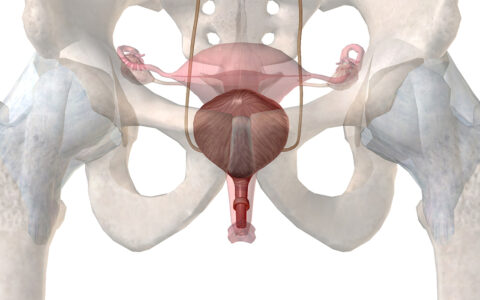Eighty-six percent of pregnant women who deliver via C-section are prescribed opioids in the hospital and given an opioid prescription at discharge. Typically, a woman will receive a standard opioid prescription at discharge regardless of the quantity administered in the hospital.
In a study published in Obstetrics and Gynecology, a group of Vanderbilt University Medical Center investigators assessed whether basing postdischarge oxycodone prescribing on inpatient opioid use could reduce a woman’s unused opioid tablets. An earlier study had characterized postdischarge opioid use and examined factors associated with variation in opioid prescribing and consumption.
“Hospitals have used a ‘one-size-fits-all’ approach to prescribing opioids following C-section,” said Sarah Osmundson, M.D., assistant professor of Maternal-Fetal Medicine at Vanderbilt. “This often resulted in unused pills.” Leftover, unused pills present a number of risks. Osmundson and her team set out on reducing opioid prescriptions for women who deliver C-sections.
Study Design
Between June and August of 2017, Osmundson and her co-investigators conducted a randomized, controlled trial of 172 women undergoing cesarean birth at Vanderbilt. Participants were randomized at discharge to a standard (30 tablets of 5 mg oxycodone) or an individualized oxycodone prescription (predicted based on each patient’s inpatient opioid use; median 14 tablets). Baseline characteristics were similar between the groups, as were inpatient pain scores.
All women were contacted starting 14 days after their cesarean birth to assess the number of oxycodone tablets used and the adequacy of pain control. The Tennessee Controlled Substance Monitoring Database was accessed to confirm dispensed opioids. The primary outcome was the number of unused oxycodone tablets prescribed for pain control after cesarean birth.
Results
Overall, 13 percent (23 of 172) of women used no opioids after discharge; 26 percent (44 of 172) used all prescribed opioids. Women in the individualized group were prescribed fewer tablets (14 versus 30) and had 50 percent fewer leftover tablets (5 versus 10) than women in the standard prescription group. There was no difference in the proportion of opioid used (60 percent versus 61 percent).
The last finding was unexpected: if pain is the sole determinant of opioid use, women should use the same amount of opioid regardless of the amount prescribed. Instead, women used fewer tablets in the individualized arm, in which they also received fewer opioids on average (8 versus 15). Patient-reported pain outcomes did not differ significantly by group.
Support for Individualizing
“We found that individualized opioid prescribing based on inpatient use reduces both the amount of opioid leftover and the amount used compared with standard prescribing,” Osmundson said. “In talking with patients, we’ve learned that there’s a lot of confusion about what they should be taking when they go home from the hospital.”
Added Osmundson, “My takeaway is that we could decrease opioid prescribing, opioid use, and leftover opioids and still adequately manage pain.”
“Individualized opioid prescribing based on inpatient use reduces both the amount of opioid leftover and the amount used.”
Creating a Tool for Decision Support
With a new grant from the National Institute on Drug Abuse, Osmundson and colleagues are developing a clinical decision support tool to help predict individualized opioid needs based on patients’ clinical, demographic and behavioral characteristics. The goal is to avoid issues associated with both over- and under-prescribing. Eventually, the tool will be built into electronic health records so data can be pulled directly from a patient’s chart and the model can be transferred to other institutions.
“I think few physicians look at a patient’s opioid use in the hospital to make a prescribing decision,” Osmundson said, “And it can be cumbersome for providers to review an entire inpatient record to see what was used. The goal of a clinical support tool is to do that work for them.”





